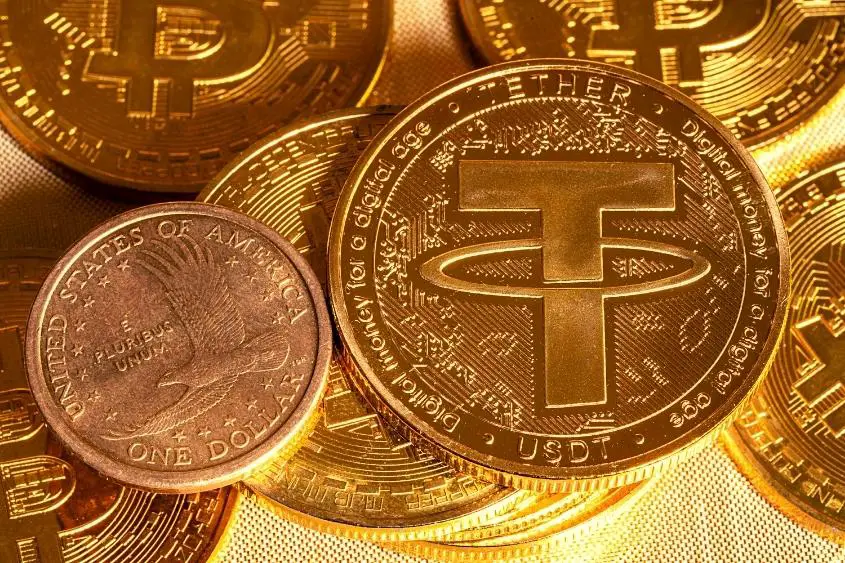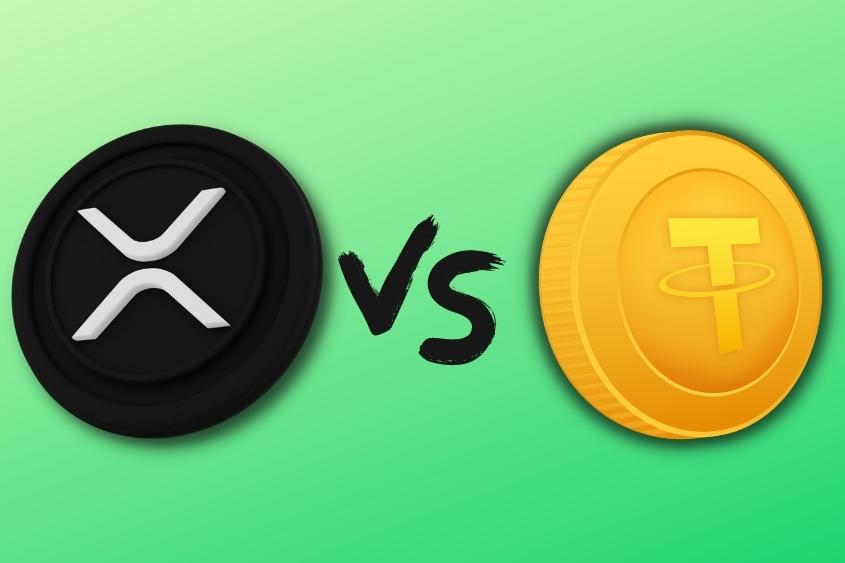If you are a savvy crypto user, you must know how Cryptocurrencies have taken the world with their innovative technology, and stablecoins have provided a solution to the volatility otherwise associated with them. Apart from Bitcoin and Ethereum, Tether (USDT) and Ripple (XRP) have been competing in the market for a long time now. But which one should you buy and why?
If you are living abroad, spending money on XRP is an ideal choice since it is predominantly focused on changing the dimensions of banks. However, if your current domain is local dealings and investments, Tether is the best choice considering it’s pegged to USD 1.
However, making a choice between these two is not an easy decision. One is a stablecoin, whilst the other is a pioneering system used by banks worldwide. So, which one is worth investing more money in? In this article, we talk about each and facilitate you in making the right choice.
Tether (USDT)
Although the summer of 2021 did not see many ruffles in the crypto-sphere, Tether (USDT) still managed to reach an all-time high in terms of market value. In the crypto world, a pivotal concept exists, commonly known as “dominance.” It is one of the oldest and most trusted metrics present. Dominance is used to measure a coin’s market cap in relation to the overall crypto market.

An example for your reference is that dominance is used to show how strong Bitcoin is compared to all the other coins that are not BTC and are known as Altcoins. As of May 2022, Tether’s market cap was 83.15 Billion USD. Considering that, Tether’s dominance has been pretty high when compared with other stablecoins.
Tether Use Cases
Since Tether is pegged to USD 1, it allows investors to move funds between the cryptocurrency market in the traditional financial system while minimizing volatility. It is a popular choice for Decentralized Finances or Defi, which is an online financial market that functions without the supervision of a central bank and usually relies on cryptocurrencies for payment in loans.
Due to the rapidly changing size of this market and heavy fluctuations, stablecoins have become the most reliable option, amongst which Tether takes the cake. Tether also serves as an inspiration for so-called CDBC or Central Bank Digital Currencies like China’s e-CNY currency or “Digital Euro” researched by EU-27.
If you transfer funds often for personal or business-related expenses and you want to do so without a central authority watching your every move, then Tether might be the best option for you. With its affordable price, you can buy as much as you feel comfortable investing in.
Ripple (XRP)
XRP is the native cryptocurrency for products that are developed by Ripple Labs. The products are used for payment settlement, asset exchange, and remittance systems that work like the SWIFT banking system for international money transfers. XRP is pre-mined and uses a simple method of mining as compared to that operated for Bitcoin.

XRP price rose in 2021 but nevertheless, it did not manage to reach the heights it had in the year 2017. This was in contrast to Ethereum, to which XRP is most commonly compared in terms of market.
Ripple Use Cases
Ripple’s software xCurrent allows banks to differentiate themselves through offers of novel cross-border payment services while also lowering the total settlement cost. Another software provided by Ripple, known as xRapid, allows payment providers and financial institutions to minimize liquidity costs while also improving the customer experience.
Since payments in emerging markets oftentimes require pre-funded local currency accounts throughout the globe, the liquidity costs are high. xRapid allows for a lowering of capital requirements in terms of liquidity. RippleNet also allows for e-Invoicing, International supply chain payments, Global currency accounts, Real-time cash pooling, International bill pay, Real-time remittances, and International P2P payments.
Considering Ripple is already being utilized across multiple industries, now might be a good time to invest as the entire crypto space is still being adopted by the mainstream. In addition, the current price of XRP is an affordable price for anyone to invest in. The next question is how much are you willing to invest?
Which One Should You Buy?
Despite the vast differences in market cap, it is almost a hard choice between Tether—a stable coin—and XRP—which is a valuable token for the Ripple Banking system. The thing is that we all know the market of crypto is a volatile one.
The current fiasco around Luna has left stablecoin holders wondering if the stability is really a consistent value. According to experts, Tether is built around a strong combination of science and academia. When compared to Ripple, of course, it holds a higher marketing stance.

When you make transactions based on USD, there are a lot of technicalities involved. One of the major difficulties you might face is with banks, however, Tether makes it hassle-free, but then again, if international transactions are your domain, then Ripple is a far better call than Tether.
Basically, which coin you choose to invest in depends on the use case. Both coins have different use cases. However, the use cases that are the same for both acquire that one is better than the other. For example, experts consider XRP’s role to be akin to that of U.S Dollars within international markets.
The greenback, or the U.S Dollar as we know it, often serves to be a bridge currency when international trade transactions and currency conversions are concerned. It is especially used in conversions that take place between currencies which get thinly traded in international markets.
For example, a conversion between Kyrgyzstani som and Japanese yen would take place through U.S Dollars. XRP serves a similar role when it comes to currency conversion. Ripple uses XRP to ensure quick liquidity when it comes to usage by consumers.
xRapid, one of the eminent products from Ripple, uses XRP as a “bridge asset” (like U.S Dollar). In other words, it is used as an asset that businesses and financial institutions can use as a bridge transfer between two different fiat currencies.
So, basically, you replace the U.S Dollar with XRP. In this situation, the financial institution will simply purchase an equivalent amount of XRP and send it across the Ripple Network. This is referred to as “third party liquidity provisioning” and is considered to be ideal for banks that do not have a corresponding relationship with each other.
If you’re stuck wondering how much you should invest, consider the dollar cost averaging method. This is considered a safe method in which you invest a set amount of money in smaller increments at regular intervals. This allows you to profit from crypto market downturns without putting too much cash at risk at any particular moment but still allows you to profit from market increases.
Final thoughts
At the end of the day, it is almost always a tricky business when dealing with the crypto-sphere. Cryptocurrencies are a volatile asset of the world. Yet, stablecoins tend to add to their zest by lowering the chances of volatility.
If you are looking forward to investing in the business of the crypto-sphere, then make your choice per your needs. While DeFi systems are a popular domain to work on, the rapidly changing banking systems can prove useful when living abroad.
